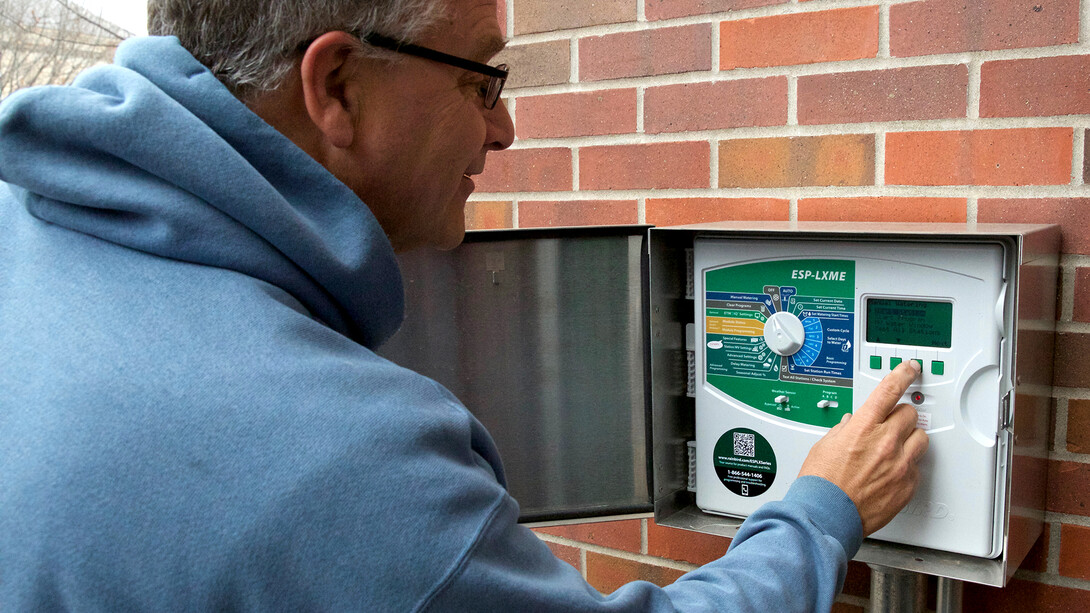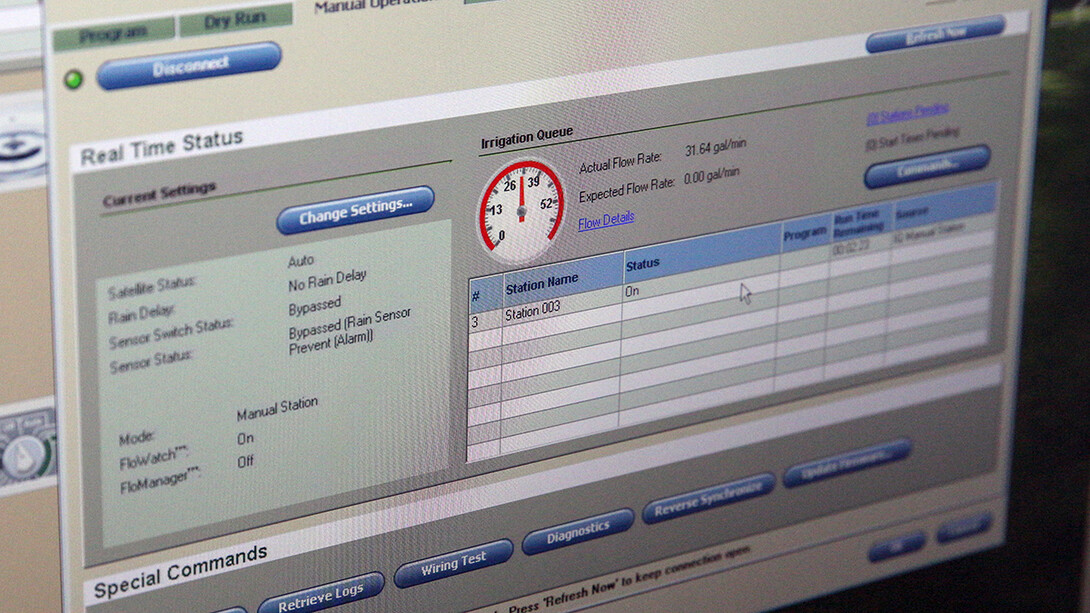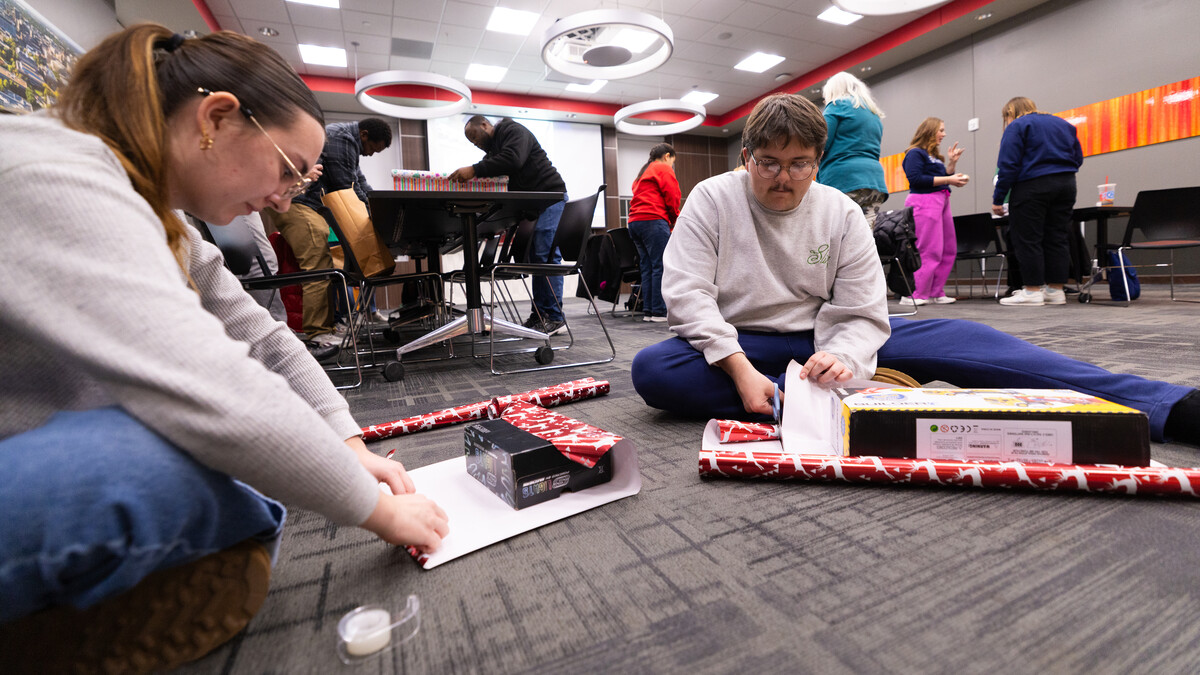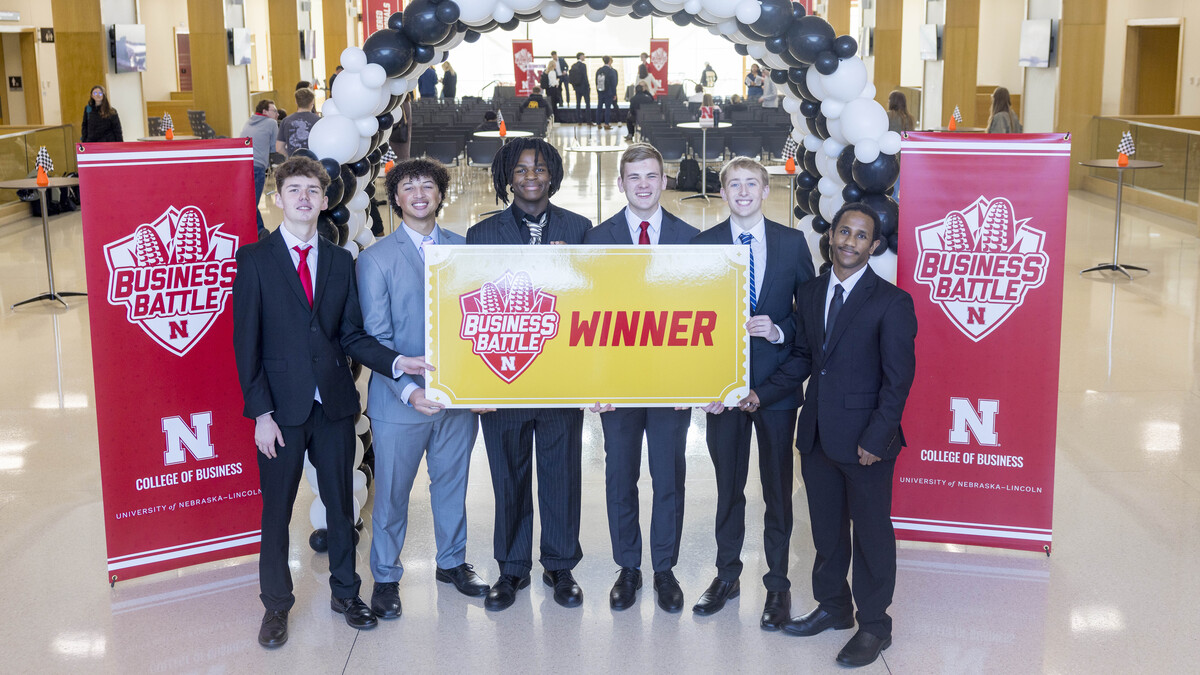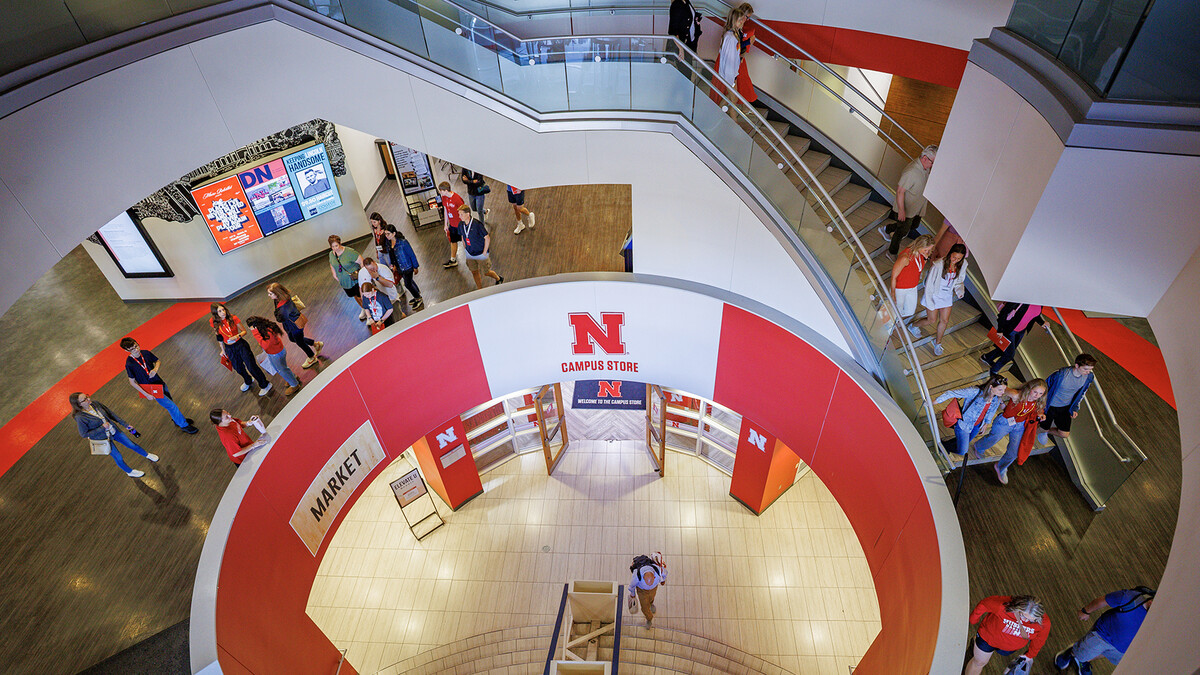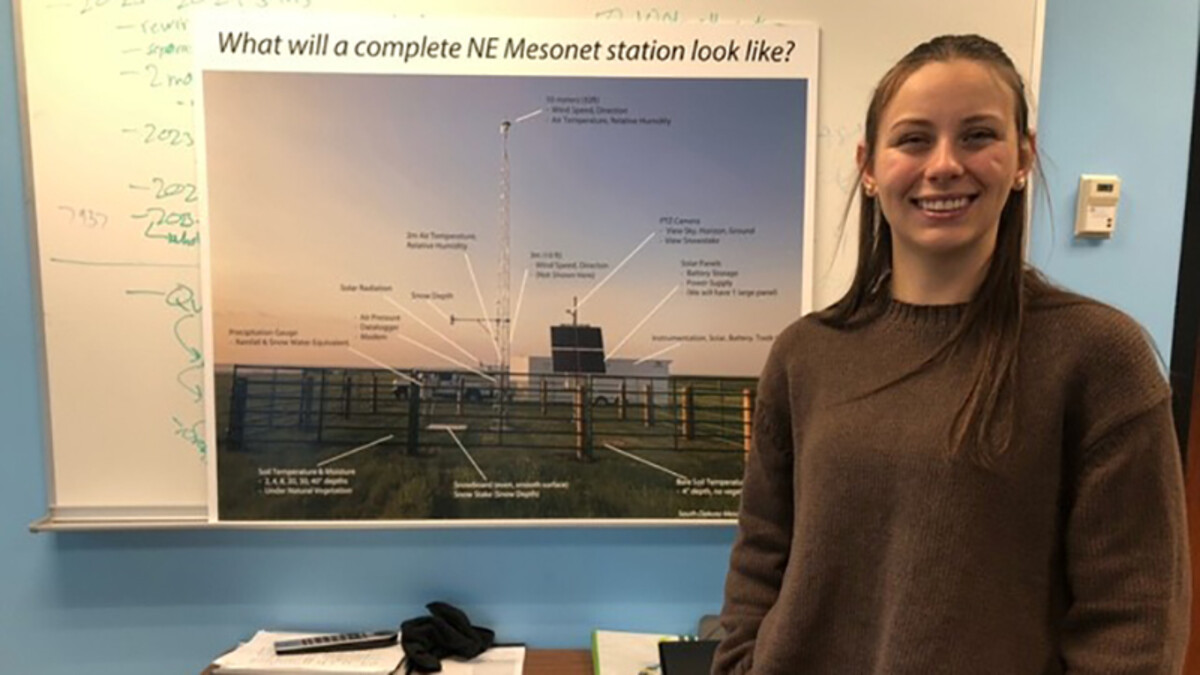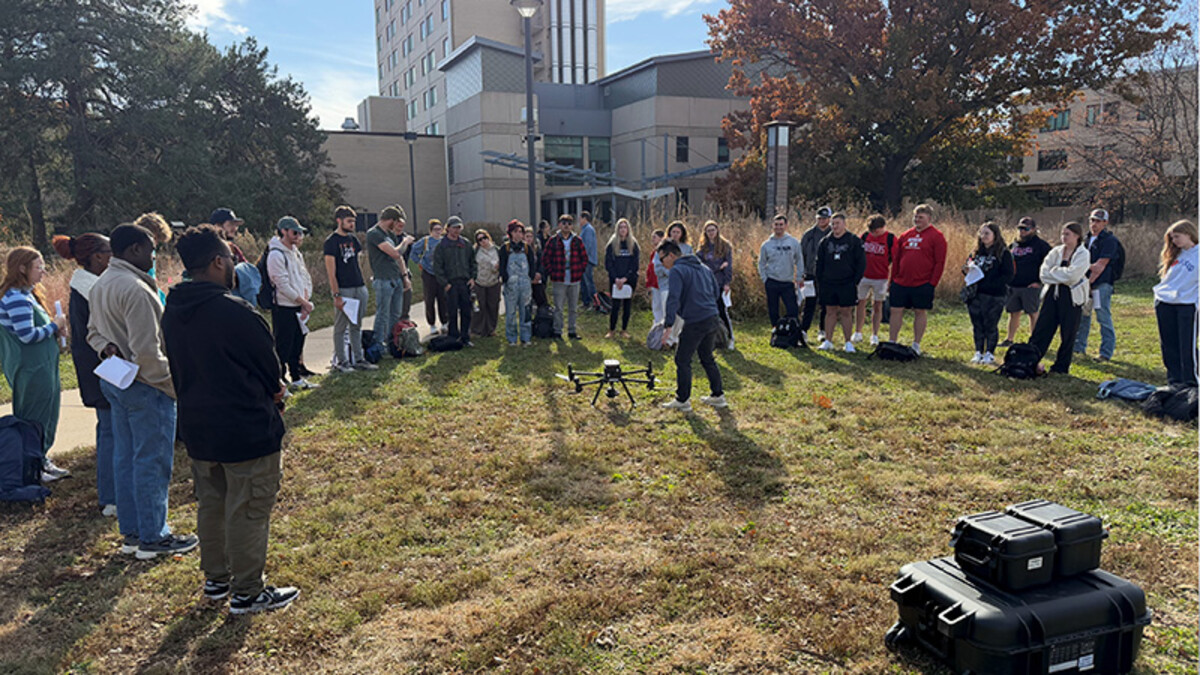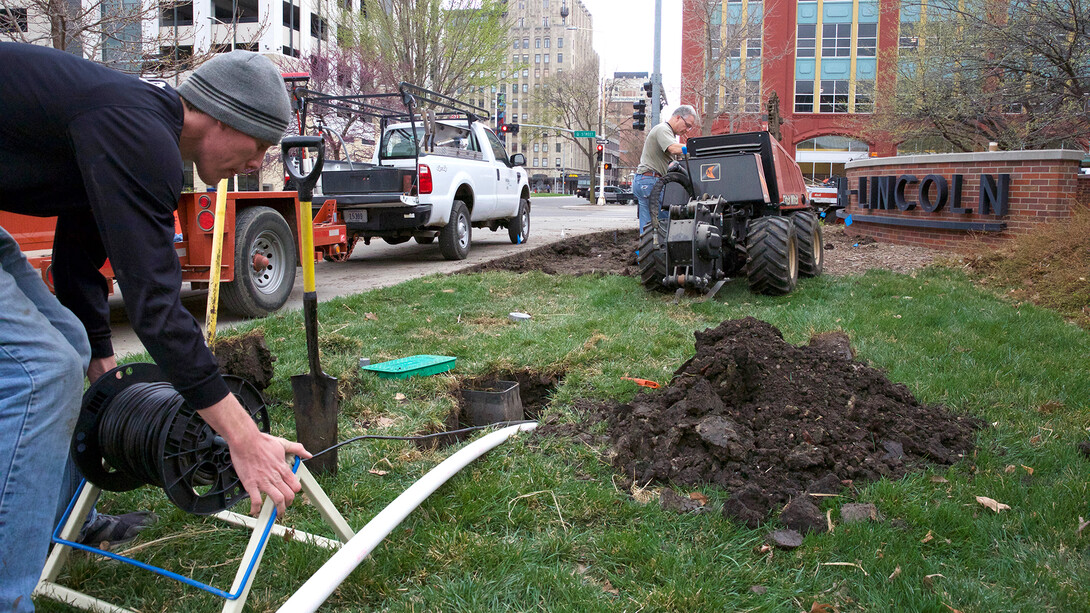
The University of Nebraska–Lincoln is tapping a new irrigation system that will reduce water usage and related expenses while maintaining campus greenspaces and gardens.
The new system will link UNL’s 800 irrigation zones into a single, centralized control, allowing landscape services employees to maintain and monitor watering from a computer screen. The $742,000 upgrade will be completed in three phases, with the first phase going online this spring.
When the entire system launches in spring 2018, it is estimated to reduce UNL’s water usage by at least 20 percent and save more than $78,000 in related utility and labor expenses annually.
“This is going to be an incredibly powerful water management tool for the university,” said Fred Thorne, irrigation manager for UNL’s Landscape Services. “It replaces an outdated system where we would drive out and visit every campus irrigation site to turn off the water when rains were forecast.
“It basically takes the campus irrigation system from the caveman days to flight.”
In its efforts to maintain a beautiful campus, UNL regularly irrigates with an eye toward environmental stewardship. The upgrade to a centralized control system allows UNL to further invest in sustainable practices. It is also a concept used on other university campuses, including Big Ten cohorts Purdue University and the University of Michigan, as well as the University of Nebraska at Omaha.
“Other universities with centralized control have reported a water reduction of around 35 percent,” said Emily Casper, UNL’s landscape architect and assistant director of Landscape Services. “Once we get experience with the system, fine tuning irrigation to individual areas across City and East campus, we believe 30 percent is a reachable goal.”
Thorne said water savings will be realized primarily through intelligent and responsive use of the system — turning it off days before rain events, allowing the ground to dry and then soak in more water (which will also reduce groundwater runoff), and keeping it shut down during wet periods.
The system is also programmed to issue electronic alerts when it senses potential problems.
“If water is flowing outside of the programmed times, it will let us know right away,” Thorne said. “We can then go to the computer, immediately shut down water to that part of the irrigation system, then go to the site and track down the source of the problem.”
Further water usage reductions will also be realized through the installation of new, more efficient irrigation heads and deduct meters, which are specialized devices that measure water use and result in deductions in sewer water bills.
And, the centralized system is programmed to track water usage, allowing operators to generate reports as needed.
“We work at a place that hosts Water for Food conferences, is home to the National Drought Mitigation Center and has a student body that is conscientious about sustainability and conservation,” Thorne said. “Really, of any place out there, this university needs to have a high standard in how we manage water. And this irrigation system is one of the ways we can show people that water management is important at UNL.”
Funding for the project was provided via savings UNL has earned through other utility improvement projects. Based on the 20 percent decline in water usage and reductions in related utility expenses, the irrigation system is estimated to pay for itself in less than 10 years.
For more information about sustainability efforts at UNL, click here.
